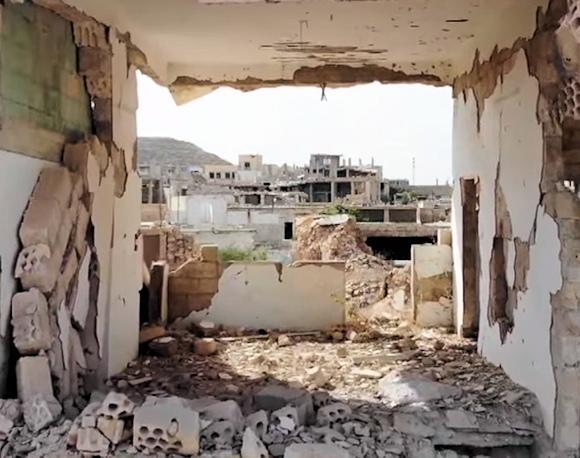As part of the tortuous diplomatic process of the Astana Peace Conference, the three main powers operating in the Syrian board (Russia, Iran and Turkey) had negotiated the creation of four "Safe Zones", also called "Conflict De-intensification Areas" ", In order to bring about a cessation of hostilities in the local area, a preamble to the beginning of peace negotiations aimed at establishing a new political balance in the Arab Republic of Syria.
The original 4 May 2017 agreements provided for the establishment of 3 "Safe Zones":
1- "Rastan Area" located near Homs;
2- "Zona del Ghouta Orientale" located near Damascus:
3- "Zona di Dara'a" comprising most of the provinces of Dara'a and Quneitra.
Subsequently, in September of 2017 also the province of Idlib was elevated to "Fourth Safe Zone", while the so-called "Security Belt of Northern Syria" under the control of the Turkish armed forces and the affiliated militias remains for now excluded from any negotiation.
However, the reality on the ground has proved to be much more difficult to manage. Although the "Safe Zones" have allowed to circumscribe the radius of action of the Islamist militias, they have not diminished the bellicosity anyway so much that the myriad of subsequent incidents has contributed to undermining the negotiation and make it "dead letter" immediately, obliging the Russian, Syrian, Iranian forces and the Iraqi and Hezbollah militias present in the operational theater to use force to obtain the pacification of these areas. The result is that, at almost 1 a year and a half from the 4 May 2017 agreement, three of the so-called "Safe Zones" have returned under the control of the Syrian central government following as many field battles and subsequent evacuations of the most intransigent elements between local Islamist factions. The last remaining "Safe Zone" is that of Idlib and it too soon seemed destined to become the area of the final confrontation between Assad and the Islamists just as Aleppo had been in December of the 2016.
 However, in September this year, the contracting parties managed to reach a new "ceasefire" agreement, extending the regime of the "Idlib Safe Zone" for other 6 months. Beyond the technical details decided in the negotiations, however, it is necessary to emphasize that this agreement has an absolutely temporal value and does not resolve any of the Gordian knots that led to the conflict. Although the Islamist forces have an obligation to withdraw heavy armaments from the front line, no agreement for the definitive status of the province of Idlib has even been mentioned enough to make the conclusion that the whole thing represents only a mere frontal action to bring at a temporary "pause" in the fighting in order to allow Erdogan to save face in a period in which the currency crisis in Turkey risks partially eroding his consent. Furthermore, the aforementioned time frame would allow the contenders to wait for the final outcome of the mid-term elections in the United States and to adjust their future strategies based on the results produced by the polls.
However, in September this year, the contracting parties managed to reach a new "ceasefire" agreement, extending the regime of the "Idlib Safe Zone" for other 6 months. Beyond the technical details decided in the negotiations, however, it is necessary to emphasize that this agreement has an absolutely temporal value and does not resolve any of the Gordian knots that led to the conflict. Although the Islamist forces have an obligation to withdraw heavy armaments from the front line, no agreement for the definitive status of the province of Idlib has even been mentioned enough to make the conclusion that the whole thing represents only a mere frontal action to bring at a temporary "pause" in the fighting in order to allow Erdogan to save face in a period in which the currency crisis in Turkey risks partially eroding his consent. Furthermore, the aforementioned time frame would allow the contenders to wait for the final outcome of the mid-term elections in the United States and to adjust their future strategies based on the results produced by the polls.
In any case, the most intransigent elements among the Islamist factions concentrated in the area of Idlib have already amply demonstrated a certain restlessness since the violations of the "ceasefire" regime take place every now and then, along the line of contact, so much to to tell the Minister of Foreign Affairs of the Russian Federation, Sergey Lavrov that: "Although no large-scale military operation is scheduled in the short term, it must be clear that the fate of all foreign fighters present on the territory of the Arab Republic of Syria , as well as that of the troops of other self-invited countries without the consent of the legitimate Syrian government, will inevitably be to leave ". To a good connoisseur, a few words.
(images: Euronews / SANA)












